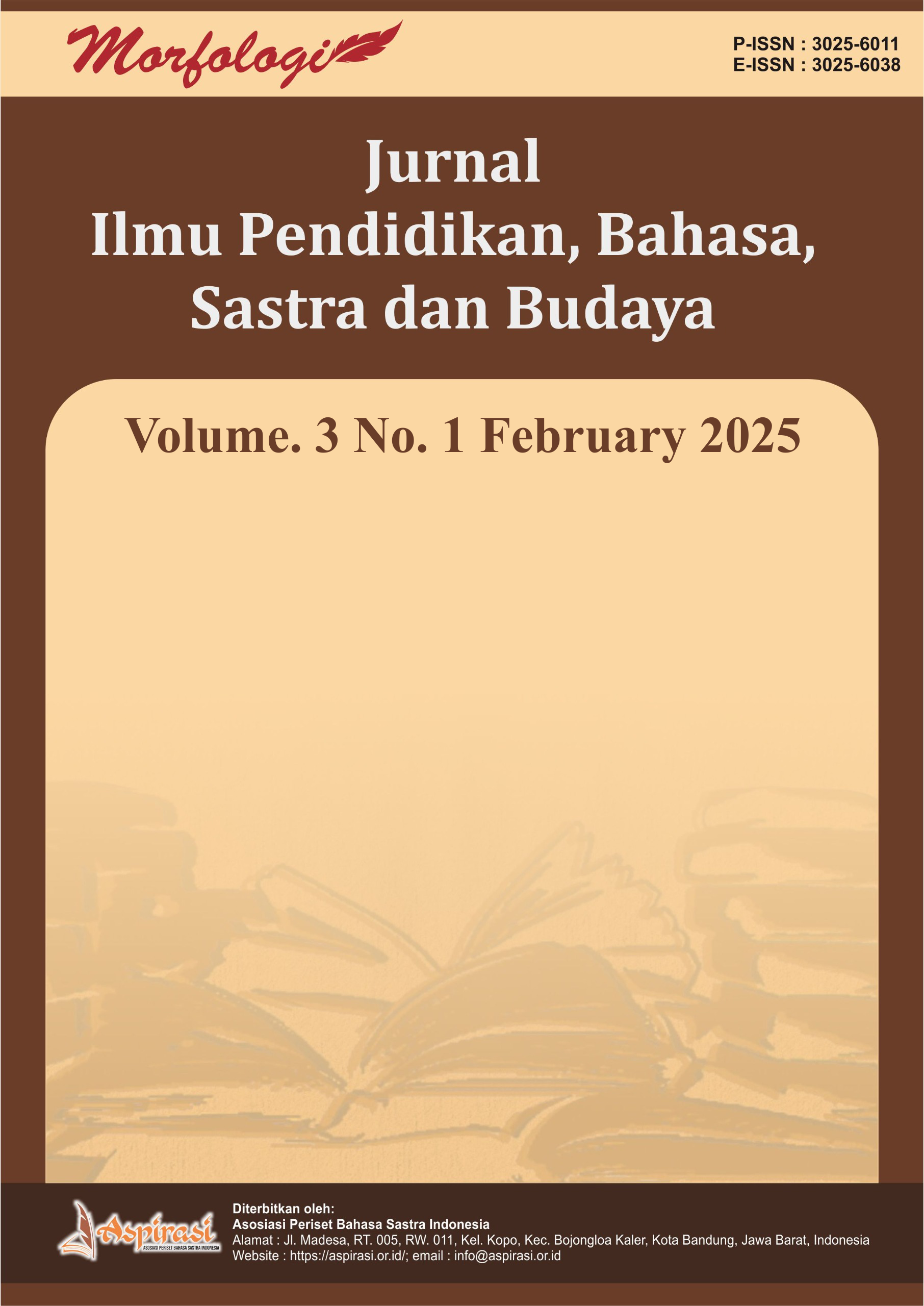Representasi Gegar Budaya dalam Novel Edensor
DOI:
https://doi.org/10.61132/morfologi.v3i1.1335Keywords:
culture shock, Edensor, Kalvero Oberg, identity, intercultural interactionAbstract
This article analyzes the representation of culture shock in Andrea Hirata's novel Edensor, focusing on the experiences of the main characters, Ikal and Arai, as they interact with European culture. Using Kalvero Oberg's culture shock theory, which includes the stages of honeymoon, crisis, recovery, and adjustment, this study explores how both characters undergo shifts in mindset and attitudes when confronted with foreign cultural values. The paper also discusses the impact of culture shock on their character development and its relevance in today's global socio-cultural context, including migration and international education. Through this analysis, it is understood that culture shock is not merely a clash of cultures, but also a crucial process for learning and personal growth. The findings of this study are expected to contribute to interdisciplinary literary studies, particularly in understanding the relationship between literature and social-cultural phenomena.
Downloads
References
Abrams, M. H., & Harpham, G. G. (2015). A glossary of literary terms (11th ed.). Cengage Learning.
Berry, J. W. (1997). Immigration, Acculturation, and Adaptation. Applied Psychology, 46(1), 5–34. https://doi.org/10.1111/j.1464-0597.1997.tb01087.x
Berry, J. W. (2005). Acculturation: Living successfully in two cultures. International Journal of Intercultural Relations, 29(6), 697–712. https://doi.org/10.1016/j.ijintrel.2005.07.013
Damono, S. D. (2019). Sosiologi sastra: Sebuah pengantar ringkas. Grasindo.
Eagleton, T. (2008). Literary theory: An introduction (3rd ed.). Blackwell Publishing.
Faruk, A. (2012). Pengantar sosiologi sastra. Pustaka Pelajar.
Hall, S. (1996). Cultural identity and diaspora. In P. Mongia (Ed.), Contemporary postcolonial theory (pp. 110-121). Arnold.
Hall, S. (1997). Representation: Cultural representations and signifying practices. Sage Publications.
Hirata, A. (2007). Edensor. Jakarta: Bentang Pustaka.
Hofstede, G. (2001). Culture's consequences: Comparing values, behaviors, institutions, and organizations across nations (2nd ed.). Thousand Oaks, CA: Sage.
Kim, Y. Y. (2001). Becoming intercultural: An integrative theory of communication and cross-cultural adaptation. Sage Publications.
Lysgaard, S. (1955). Adjustment in a foreign society: Norwegian Fulbright grantees visiting the United States. International Social Science Bulletin, 7(1), 45–51. url: https://unesdoc.unesco.org/ark:/48223/pf0000033837
Nurgiyantoro, B. (2013). Teori pengkajian fiksi. Gadjah Mada University Press.
Oberg, K. (1960). Cultural shock: Adjustment to new cultural environments. Practical Anthropology, 7(4), 177-182.
Said, E. W. (1978). Orientalism. Pantheon Books.
Stuart, H. (1996). Questions of cultural identity. Sage Publications.
Sutrisno, M., & Putranto, E. (2005). Teori-teori kebudayaan. Kanisius.
Thompson, J. B. (1995). The media and modernity: A social theory of the media. Polity Press.
Triandis, H. C. (1995). Individualism & collectivism. Boulder, CO: Westview Press.
Ward, C., Bochner, S., & Furnham, A. (2001). The psychology of culture shock. Routledge.
Williams, R. (1977). Marxism and literature. Oxford University Press.
Downloads
Published
How to Cite
Issue
Section
License
Copyright (c) 2025 Morfologi: Jurnal Ilmu Pendidikan, Bahasa, Sastra dan Budaya

This work is licensed under a Creative Commons Attribution-ShareAlike 4.0 International License.





